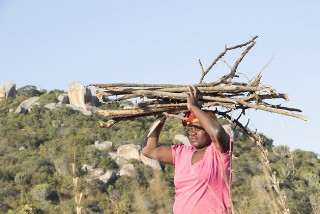BONN, Mar 6 2017 (IPS) - International Women’s Day this year focuses on economic empowerment in the changing world of work. The vision is to achieve gender equality and empowerment of women and girls by 2030. Girls’ aged three will become adults with a legal right to work in 2030. Together, with those aged up to 10, these girls are the prime target for gender equality by 2030.
But the persistence of the obstacles women have faced throughout history and the neglect of poor rural women in the Millennium Development Goals era, cautions us to focus on two fronts. First, the front-end mechanisms, such as education, that prepare young women and girls for their careers. But we must not forget the back-end mechanisms linked to the land, which dictate the livelihoods of a majority of women in the rural areas. Women will likely still fall back on them in 2030. They are equally vital.
Women’s land rights, one of the 2030 targets for gender equality, is a key mechanism that will shape women’s progress in agriculture. But is change possible?
By 2011, women made up 43 percent of the labor in agriculture in the developing countries. In Africa and Asia respectively, 60 and 70 percent of the adult women worked the land. But in many of these countries, women farmers can only use, not own the land they farm. Worse, in some cases, the surplus they produce or its earnings are seized by their husbands, based on their claim to land ownership. Left in a bind, many rural women, whose primary source of livelihood is the land, farm unsecured or marginal land or end up using the family land unsustainably.
Some experiments coming out of Africa show there are innovative ways for women to get land rights and ownership over their produce, which then create wealth and food security for families. They show that political will is a critical lever for change.
In the Mboula region of Senegal, the regional government allocated tracks of land to women’s groups to farm together to meet household food needs. Women self-organized into groups that work one day a week. The benefits are more than the government expected. Women spend less time working the land but consistently produce surplus food, meeting both family and market needs. The results, combined with the security of tenure they enjoy over the land they use, have motivated the women to seek training to cultivate a traditional tree, at scale. They intend to produce its oil commercially, harvest its leaves for food and improve the land’s productivity through agroforestry.
In Eastern Uganda, the government has taken a similar initiative one step further. It targets women who only possess user rights to family land. Previously food insecure, they have rehabilitated degraded land and are producing a surplus. The environment and trade ministries jointly developed a program to train the women on how set up, run and manage a cooperative. The women are close to joining the formal food supply chain. They are entrepreneurs and job creators in their community.
Small changes can be transformational.
Preparing every girl to become economically empowered is a top priority for achieving gender equality by 2030. The rear view of history cautions that innovating on women’s land rights as we advance towards 2030 will also be vital.
There are many routes to that objective. Rural women can obtain land rights as individuals or groups. When women only have user and access rights to land, enabling them to own and market what they produce is another option. The denial of land rights by culture is not inescapable trap. Where the leadership is enlightened and progressive, it is possible to create new land rights models.
This article is part of a series of stories and op-eds launched by IPS on the occasion of this year’s International Women’s Day on March 8.
| Themes |
| • Advocacy • Discrimination • ESC rights • Farmers/Peasants • International • Land rights • Norms and standards • Regional • Women |














